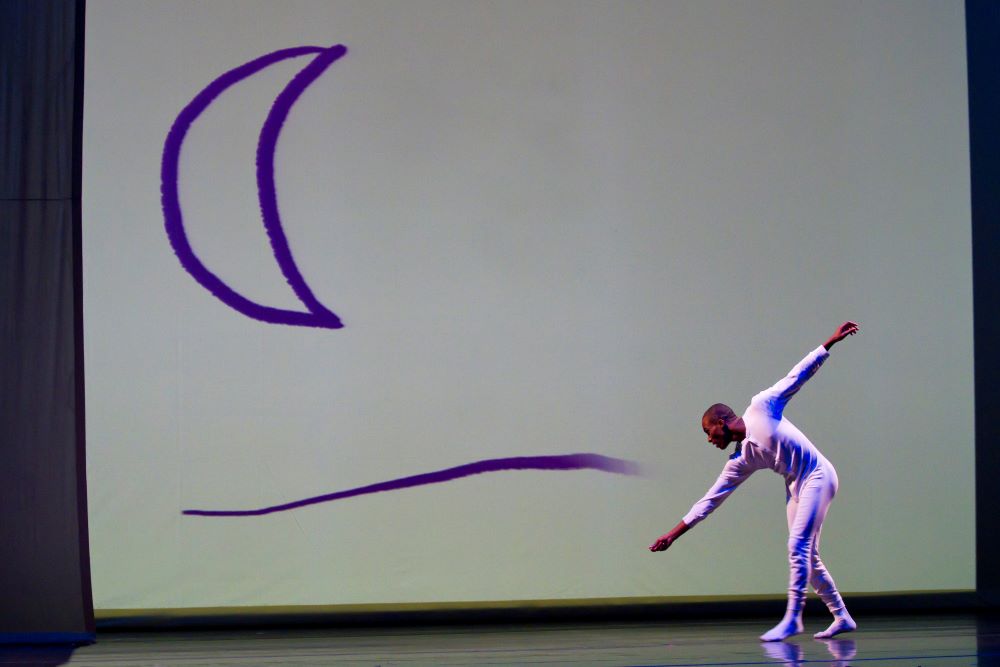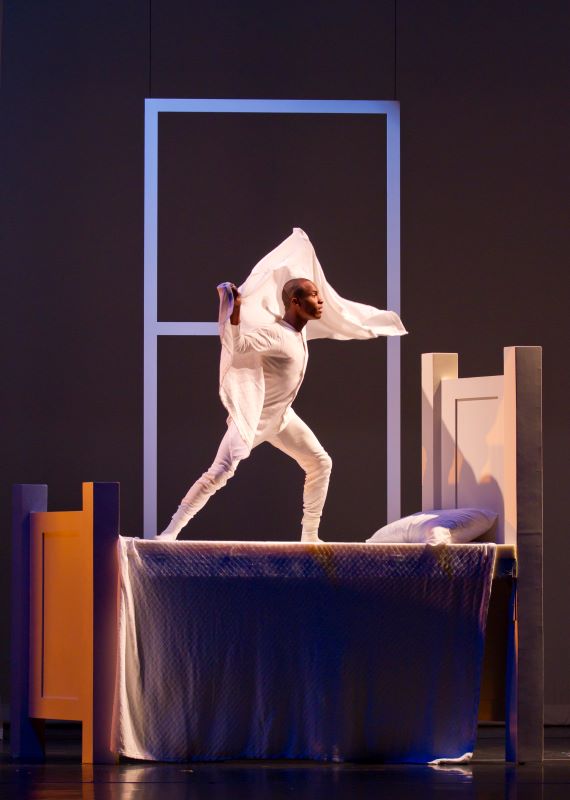Take a Journey with Harold and That Big Purple Crayon
By Emma Love Suddarth
” … And he set off on his walk, taking his big purple crayon with him.”
Many of us grew up on that line. Many others of us have read that line to our own children. For me, both are true. Crockett Johnson’s 1955 book, Harold and the Purple Crayon, has proven timeless, distinguishing itself among children’s favorites. With a simple plot, simple illustrations, and virtually only one character throughout-it draws out its reader’s sense of adventure, creativity, and imagination. The same can be said of some of ballet’s most timeless works-think on William Forsythe’s In the Middle, Somewhat Elevated. Created in 1987, that ballet is still celebrated as groundbreaking today, due partially to audiences bringing their own contemporary perspectives at each viewing. As with Harold, it’s your job as the audience member (or reader) to come up with your own meaning for the piece’s journey. Robyn Mineko Williams, award-winning choreographer, former Hubbard Street Dance Chicago artist, and devoted mother, illuminates this similarity of dance and writing artforms by giving Harold a voice within the ballet world, knowing that if anyone could get it, kids could: “[Harold] requires imagination. It’s so naturally built into Harold; it’s just this kid and a crayon. It captures the beauty of kids-they don’t have to be reminded to imagine; they just do.”

When it comes to children’s ballets, we typically think of fairytales – princesses and princes, animal companions, evil witches and, in the end, good triumphs over evil. Harold, however, exists in an entirely different universe. It is far from epic, and refreshingly unremarkable. In 2009, Robyn and fellow HSDC alum Terence Marling were asked to create a children’s ballet based on the book. The two did so with one goal in mind-relatability for any audience. “I love bringing movement to all audiences. I ask myself how can we bring it to new audiences that aren’t expecting it, or expecting to like it, and show them that movement itself is actually very relatable.” It’s no different when it comes to kids, so she and Marling kept their approach the same. As a parent, she knows the capacity of children for understanding, participation, and imagination. “It wasn’t about anything else – what can we do to bring this story to life for kids and hold their attention. Let’s do what we do because kids get it.” Engage them and they will engage you right back.

Some of our greatest artistic experiences are ones where we, the participant, can exist within the art. This is true regardless of age. Think about the books or movies that drew you in as a child-did you imagine living them out side-by side with the characters? What about your favorite performances as an adult-do you feel your own heartbeat quicken with that of the performer’s? For Harold, Robyn’s goal was keeping the children engaged beyond the first eight minutes because, after all, 50 minutes can be a long time: “It rested in the choice of music [Andrew Bird – playful lyrics with a frequent bubbliness that brings you in] and its progression, the choice of projection, and the set. All of these elements were carefully considered so kids felt like they could be inside of a world, and a part of the story.” So be prepared, because audience participation is required. Whether by stomping your feet or tracing along with the drawings, Harold is not going on his journey alone; the whole audience gets to adventure alongside him and his beloved crayon.
We can all relate to movement in some way or another. We all have immense capacity for imagination. Put these two notions together, and you have Harold and the Purple Crayon – both the book and the ballet. Whether it’s when sitting in Mccaw Hall with your program in hand, or when dangling your feet off the end of the bed with a nighttime story, prepare yourself to go on the most ordinary, most unbelievable adventure with Harold and his invaluable companion, that plain, yet unparalleled purple crayon.
Author: Emma Love Suddarth, Contributing Writer. Emma danced with PNB from 2008-2021. She writes for Pointe and Dance Magazine, as well PNB.
Familiarize yourself with Harold and his journey in the read-aloud video below!





